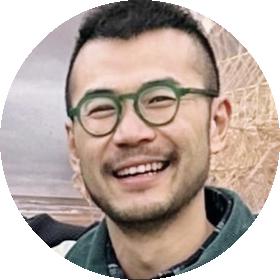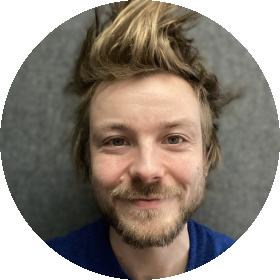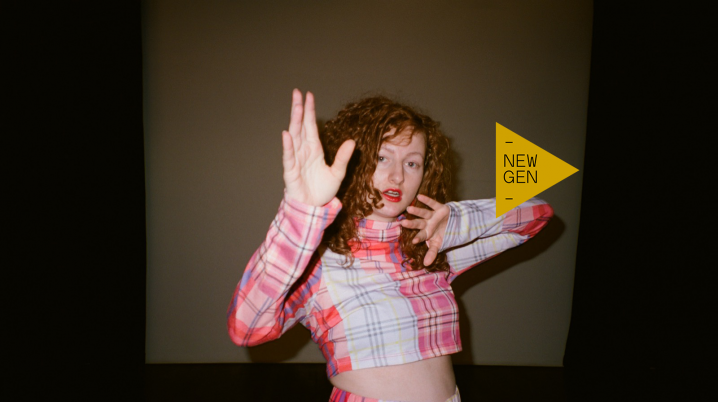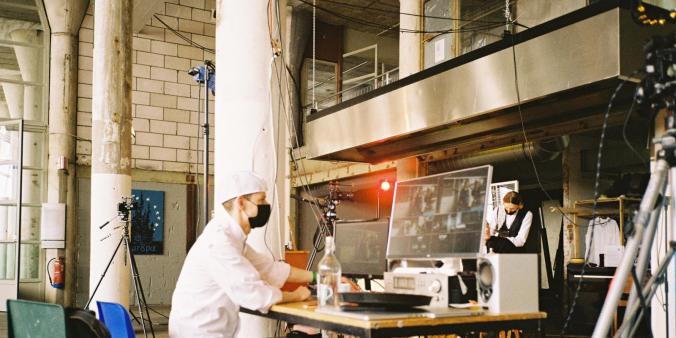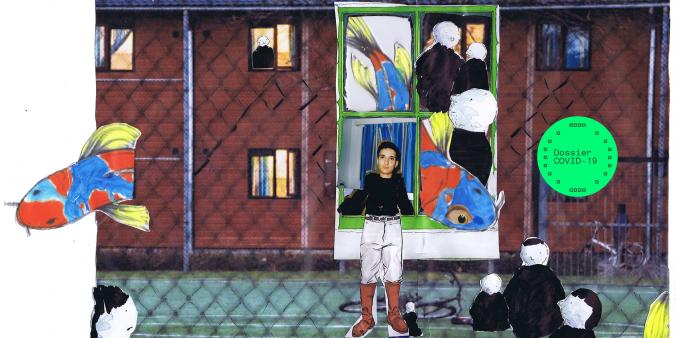
In this series of interviews with a young generation of makers, five young artists from different disciplines reflect on their artistic practice, collaborations and their future ambitions. A central question is: how does this new generation of artists make use of technology, digital platforms and social media?
GINGE, stage name of Renée Rijpstra that refers to her red curly hair, is an independent singer-songwriter based in Utrecht. In her recently released debut-EP Belly, created with .multibeat, she touches on subjects related to setting boundaries and standing your ground, mental struggles and womanhood. The photography for Belly was created by Amsterdam-based Natalia Boorsma. While already active as a photographer, Boorsma is still studying audio visual media at HKU University for the Arts Utrecht. Together with Afra van den Hoogen and Daphne Severeijns and their all-female production team, Boorsma recently finished her short film Deux Croissants, about the awkward communication between a teenage girl and her single middle-aged father.
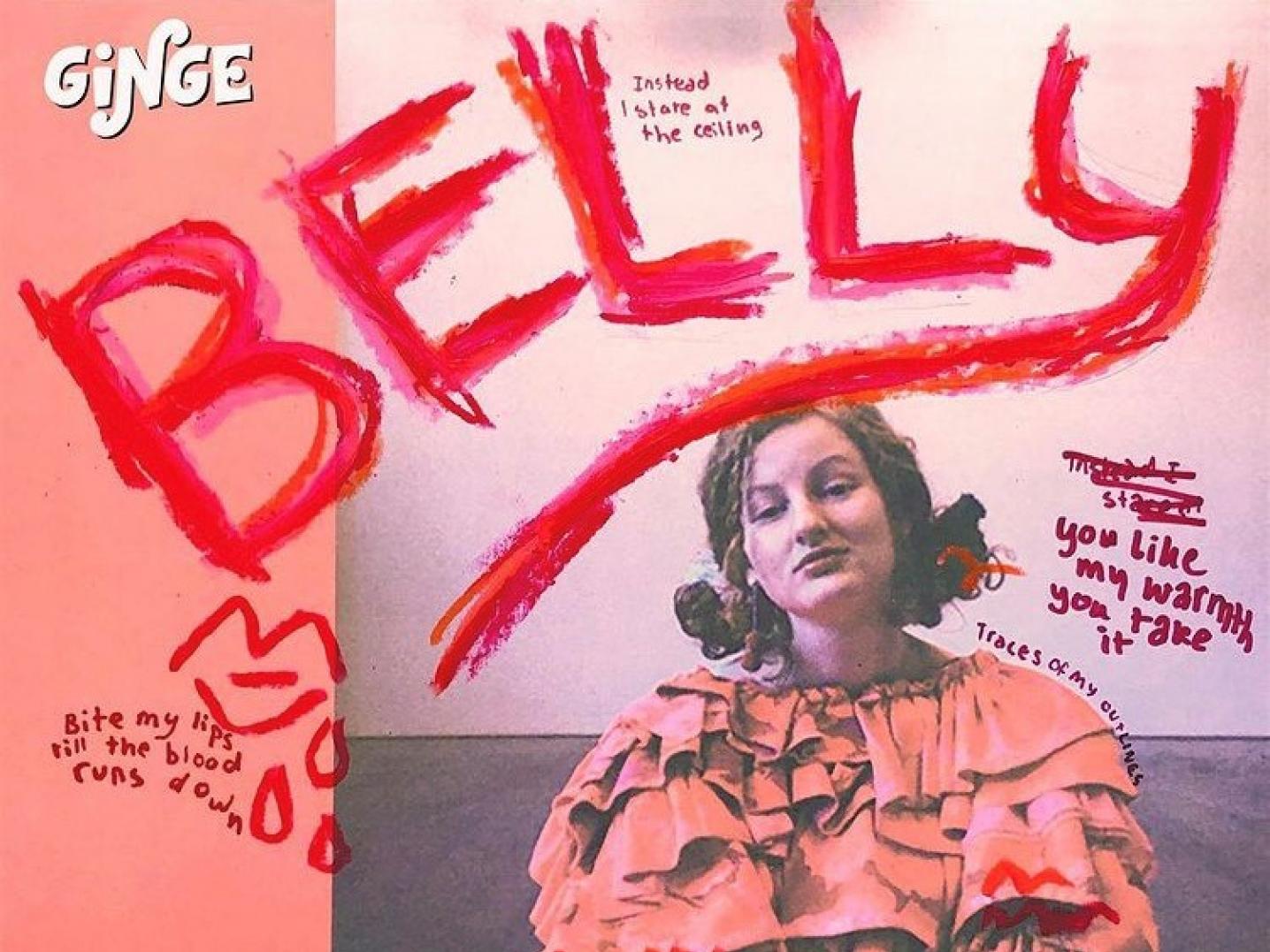
Strangers connecting
Rijpstra and Boorsma first met in 2017 during a one year programme at DOX Utrecht, a talent development and production platform for performing arts in the Netherlands. Though both Rijpstra and Boorsma started with the idea of pursuing an acting career, they each discovered different talents and aspirations during the programme. They stayed in touch via Instagram ever since and realised their first collaboration project, the music video for GINGE’s first single Stranger in September 2020.
“It was a rather spontaneous and low-key process. I chose five different outfits, referring to all the strangers you meet when you go out. Natalia shot it vertically with a fish-eye lens and I posted it exclusively on IGTV, showing how you could still party with yourself during lockdown,” tells Rijpstra. “I was longing to go out, meet new people and flirt on the dancefloor. Though Stranger was based on my own personal joyful and painful memories, the theme of the song resonated with other people’s experiences.”
‘Learning’ to be an artist
Among young artists in the Netherlands, there’s a difference between those who graduated from an art academy and those who didn’t. The educational environment of an art academy creates a safe space for creating, sharing and failing sometimes, whereas independent young artists must create this space and a network for themselves.
“I think the difference is huge. I see filmmakers my age without the same educational background, presenting themselves as professionals. At school I’m always addressed as a student, not as an artist or filmmaker, so I find it hard to take myself that serious already,” explains Boorsma, and looking at Rijpstra she adds: “You have gone further with music already, than I have with film at this point. You put your work out there, people get to know you and you learned what kind of artist you are yourself. I’m a second year student and I feel like all this is still in store for me.”
Rijpstra replies: “If I would start studying at a conservatory now, I would probably think I wouldn’t be ready either. You’re in a constant position of learning and getting feedback, which is totally different for me now .” She noticed how hard it can be to find a balance between those two worlds, even more since she’s also studying cultural and social education at HVA University for Applied Sciences. “At one point, I got burn-out symptoms. I quit my part-time job and decided to focus on my music. I still find it hard to consider writing and singing songs as my job. But making music is the love of my life.”
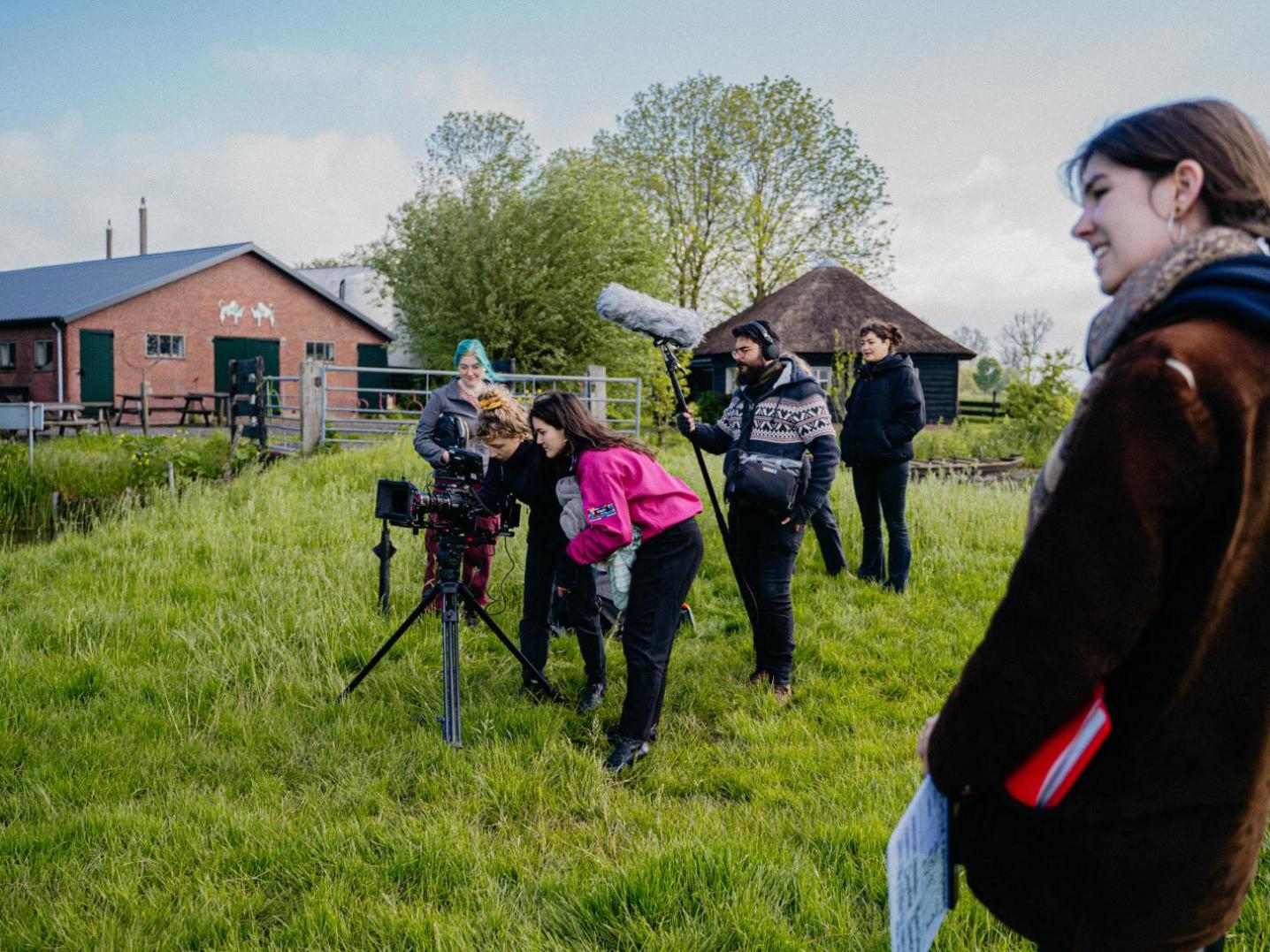
Starting out with producer Clarx Kent, GINGE found the power of turning her own experiences into songs. Writing about heartbreaks, rejection and adventure helps her get her thoughts in order. Although GINGE is signed with at Gilloinaires Management and has a distributor, she’s still rather independent and can decide for herself who she works with. She moves within the Dutch R&B scene, planning studio sessions and collaborating with all kind of artists and producers.
“Sometimes it feels like a circle of working on a voluntary basis. I love to work with people I know well, but I shouldn’t do it with nothing in return. I’m becoming more selective in my collaborations. But it’s hard because I also don’t have a financial compensation to offer, when I reach out to someone. With some of my collaborations I’m really happy such as with Boudewijn Pleij, producer and keyboard player for Belly, who I know and trust so well.”
Working from fascination
Whereas GINGE derives inspiration from her personal life, Boorsma seeks for universal experiences. “Moments and scenes in everyday life fascinate me. I write down my observations, or secretly film of photograph people in public. My biggest fascination is the universal human awkwardness.” She thinks this relates to her bicultural background, having a Dutch father and Serbian mother.
“I have always been confronted with cultural differences and a language barrier. I understand but don’t speak Serbian, and some of my family members don’t speak English. Each summer, I’m sitting right in front of them and I feel an intense love for them, but we cannot speak with each other. I find this silent communication bizarre and beautiful at the same time. My goal during the lockdown was to actually learn how to speak Serbian fluently, but after two months I realised I didn’t want to learn it from the Duolingo app but from my family in Serbia.”
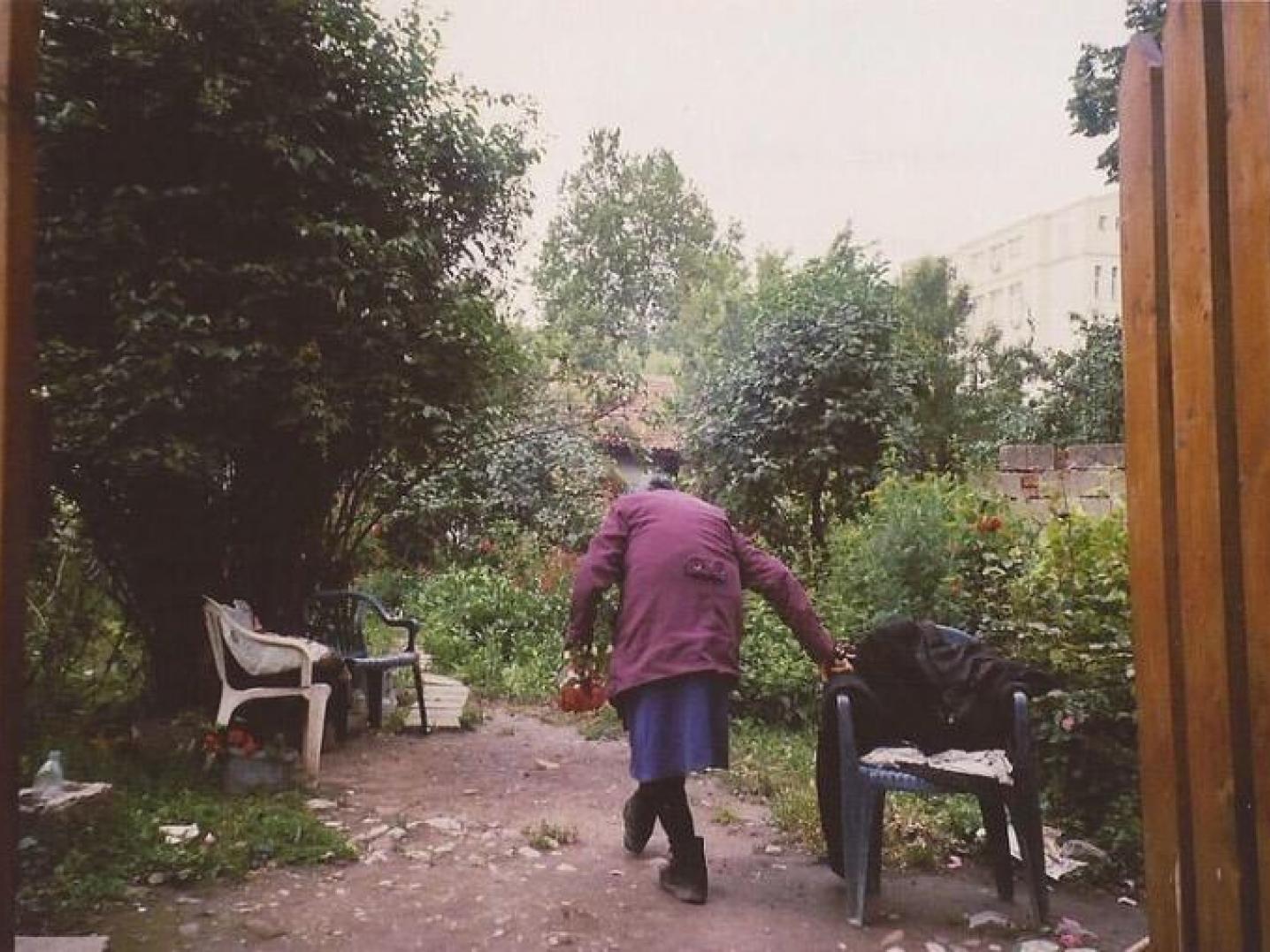
This same awkwardness is apparent in her new film Deux Croissants, which takes place at a camping site in France. The concept was derived from her own childhood memories: stuck with your parents for weeks, too afraid to make new friends. This discomfort is very physical. “During our research and preproduction period, Daphne, Afra and I talked a lot with about such topics. But in the film, many dialogues were not required. I think people can connect so much better without words.”
The impact of Instagram
One-and-half year ago, Boorsma started an Instagram account called @directed.by.women. Unexpectedly, successful Dutch filmmakers – Ashgan El-Hamus, Sallie Harmsen, Esther Duysker and Hanna van Vliet – and production companies like HALAL and KEEK started to follow it too. Now it has almost 1,200 followers and Boorsma uses it to expand her professional network. “Filmmakers whose work was featured at the Netherlands Film Festival asked me to share a still of their films. For my last film I contacted people with who I wanted to collaborate via this account, because it’s so much faster than via e-mail. It’s crazy how an immaterial, online space can help me so much,” she says.
Rijpstra shares this experience. “Here in the Netherlands, I realise how small the music industry actually is. After a few collaborations you get to know certain people and you just send a DM via Instagram and tomorrow you’ll be having a studio session with that person,” she explains. Rijpsta also invests much time and energy in her Instagram account. “I really like to create an aesthetic feed. to present myself. It helps to promote my music, but sometimes it distracts me from it. but I can’t fight the algorithm. I would have to post three times a day to keep up.”
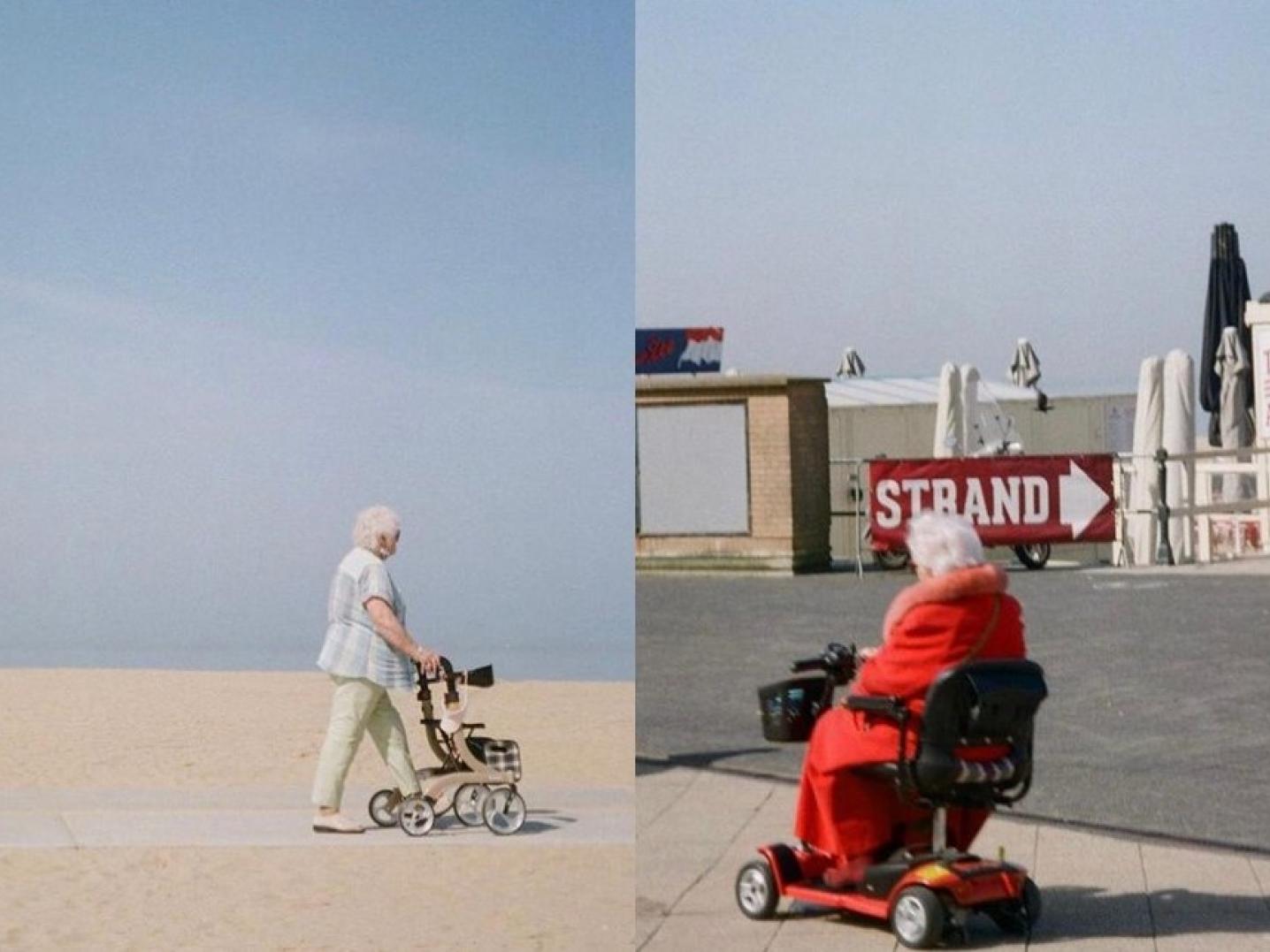
The female gaze
For Boorsma, the motivation for starting @directed.by.women was the lack of representation of women in film. “Male filmmakers are associated with their responsibility for directing, sound and light unlike their female colleagues. I’ve experienced this personally. Out of frustration I started researching female filmmakers, camera women and directors. I was shocked to hear only two women had won an Oscar for best director,” tells Boorsma.
Through @directed.by.women and working with an all-female crew, Boorsma wants to make the statement: “We can do it too. Some people say this distinction shouldn’t be necessary, but we’re not there yet. Representation matters. Also, sometimes the female gaze is required, for example with subjects concerning period poverty.” Rijpstra agrees: “In both film and music industry, most professionals are male. For my single I specifically asked other women to collaborate, since my song Knuckles & Knees is about female empowerment. On the cover picture that Natalia shot, I wear a creation by fashion designer Renée Kraaijvanger and Julia van Soest made the artwork.”

Radio vs. streaming
After releasing a record via Spotify, Rijpstra can keep track of the stream via the Spotify Artists app. Her most listened song Stranger now has more than 260,000 streams. The most important source of her streams are the official editorial Spotify playlists, for which artists and distributors can pitch new songs. Rijpstra was really happy when her song Stop Calling was added to the playlist Next Wave Neo-Soul with over 340,000 subscribers. “It’s easy to get used to growing numbers of followers and listeners, but also dangerous. Eventually, it means so much more when someone gets emotional because of my music or learned the lyrics.”
Although streaming platforms are super powerful, broadcast radio is still influential for calling out new talents. For example, when Sublime FM radio DJ-Angelique Houtveen spotlighted GINGE in her New Music Update podcast she felt really honoured and excited. “The moment your music is on the radio, it feels like you’re officially successful. Radio has an institutional value, plus they curate the official music charts,” says GINGE. Recently, she made her first few appearances on 3FM Radio, where she performed Stop Calling.
Future ambitions
GINGE is quite sure about her greatest international dream. “I would love to go to the UK at some point. All my songs are written in English, which is not practical because my vocabulary is way smaller than in Dutch. But it just feels natural, because most of the music I listen to is in English. I’m hugely inspired by the British R&B scene of the nineties, as well as today’s R&B and neo soul singers, such as Joy Crookes.”
Boorsma also has a clear vision for her future career as a filmmaker, but will first do her internship at a casting agency. “I’m very interested in casting. Stereotypes exist for a reason, but I wonder: why are Serbians always portrayed as construction workers or prostitutes? I’m keen to start the conversation about typecasting and stereotyping.”
Her graduation film will take place in her mother’s country Serbia. “I prefer to work with non-actors, to merge fiction and documentary. Some characters cannot be played or directed, because they already exist in real life. I want to work with awkwardness that can only made visible through human bodies captured on screen. For me, that’s the difference between theatre and film. I will be making films with an universal meaning for everyone to understand, no matter what language you speak.” After graduating, she wants to make a series out of Deux Croissants and establish a film studio with her companions Afra van den Hoogen and Daphne Severeijns in Amsterdam.
This autumn the two might be working together again. GINGE will be touring in the travelling music festival Popronde in The Netherlands and is looking forward to performing live more often. “It would be so cool if Natalia would join a show to take pictures. She really captures the atmosphere with her photography, she has the eye of a true filmmaker.”
The personal development as independent artists and the collaboration of Rijpstra and Boorsma show the significant role of social media platforms such as Instagram in networking, sharing ideas and finding audiences for young makers and creatives nowadays.
